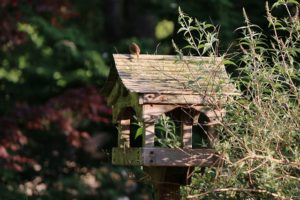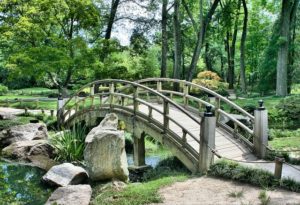
If you are looking to attract more birds to your yard it may take a little bit for than a new birdfeeder and keeping the bird bath filled. Wild birds are in much more need than what you may think. The backyard birds are in need of shelter, food, water, nesting materials & nesting locations. Providing the right habitat is the key to attracting multiple types of native birds to your backyard.
Consider Native Species
When considering what types of plants to install into your yard, think about planting native species. A good gardener will use native plants species when considering trees, grasses, flowing beds, shrubs, and berry bushes. Native wildlife will be familiar with the local plant sources of rich food that the wild birds are accustomed to. Non-native or exotic plant species may be nice but they will not attract the birds.
There is another benefit to planting local native species. The local plant species are adapted to the climate and are suited for the conditions that they will be planted in. They may require less fertilizer or watering bringing down the maintenance cost to your healthy and beautiful landscape. To learn about what native plant may be suited to your geographic area consult a local nursery or a local landscape company.
Plants Provide Layers of Vegetation
Plants provide a variety of layers of plants for the birds to use. The local bird species will be accustomed to the local vegetation and how to use it in your planting region. Some bird may like berries in native shrubbery while other may prefer foraging in the vegetation the is lower to the ground. Different birds require different nesting requirements and material for making those nest. For example, spiders often prefer vines such as silver lace. With spiders come spider webs. Hummingbirds gather these spider webs with their beaks to make their nests. Finches also use the soft cotton like material from the seed to make very soft nests for their young and may even make their tiny nests within the silver lace vine itself.
Choose plants that grow at different heights to provide the layers of vegetation that will attract the local fowl. When planting, space the vegetation appropriately so that you can design and layered effect. Surround larger trees with shrubs. Those scrubs then can be bordered by taller grasses and flowers that are closer to the ground. Doing this will provide the attraction that local bird species need in your yard and without being overcrowded.
Planting with Pant Density
Planting vegetation with density is important for the birds for feeling safe and it provides adequate shelter. To provide shelter in your backyard create denser areas that can shield the local bird wildlife from hawks and cats. Roosting fowl also prefer dense vegetation so they can make their nests and turning the local wildlife into permeate residence.
Add vegetation density by creating clumps of vegetation using corridors where the bird can feel safe. For example, a narrow longer bed of a variety of vegetation will make the birds feel more secure than scattered planting beds. Dense vegetation looks good at the borders of buildings and along yard borders.
Open Areas
Open areas in your yard have the least amount of food and shelter from predators. Reduce these open spaces by planting trees, widening flower beads, and adding shrubs. Adding will provide adequate shelter and reduce the time you are mowing the lawn.
A perfect way to attract bird is not with a perfectly manicured lawn. Brush piles, leaves, tall uncut grasses are very attractive to native birds because they provide an abundance of food and material to forage through. A bird’s natural habitat will have the abundance of material like this to hunt for bugs and it provides great nesting material. You don’t necessarily need to turn your backyard into an urban jungle however you can leave some areas of your landscape “natural” and sill enjoy the benefits of a perfect landscape in other locations. Let the flowers and seeding plants go to seed without pruning them. This will provide additional food for the birds.
Learn More About Landscaping

